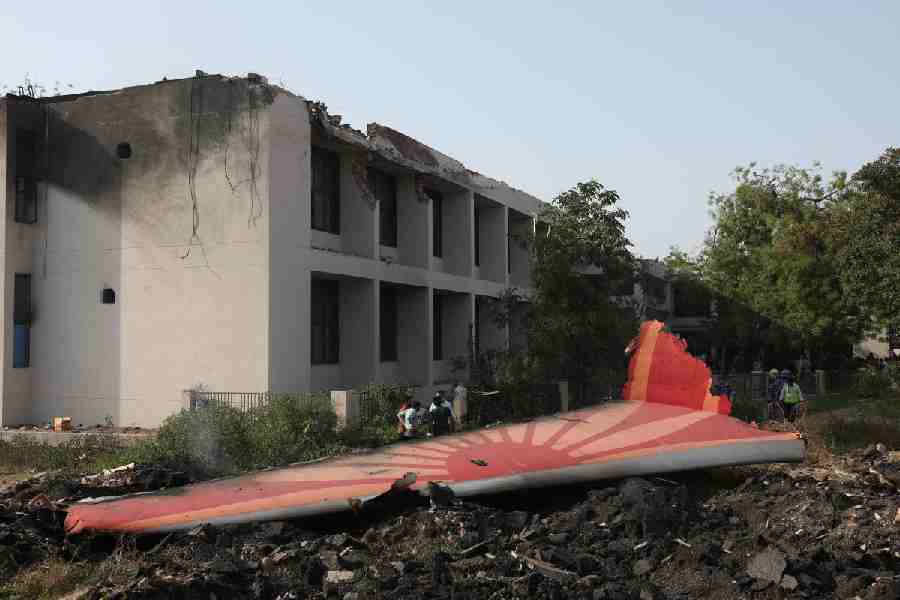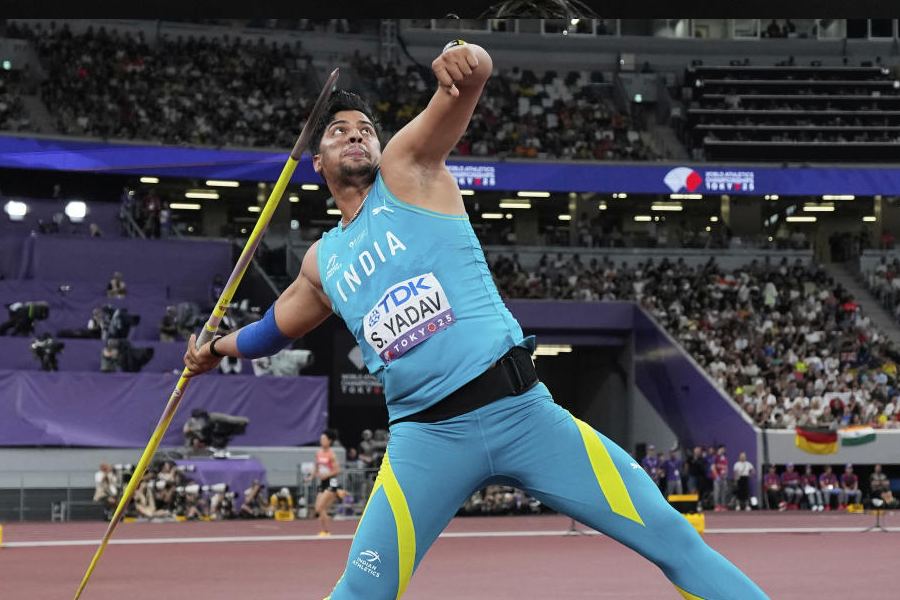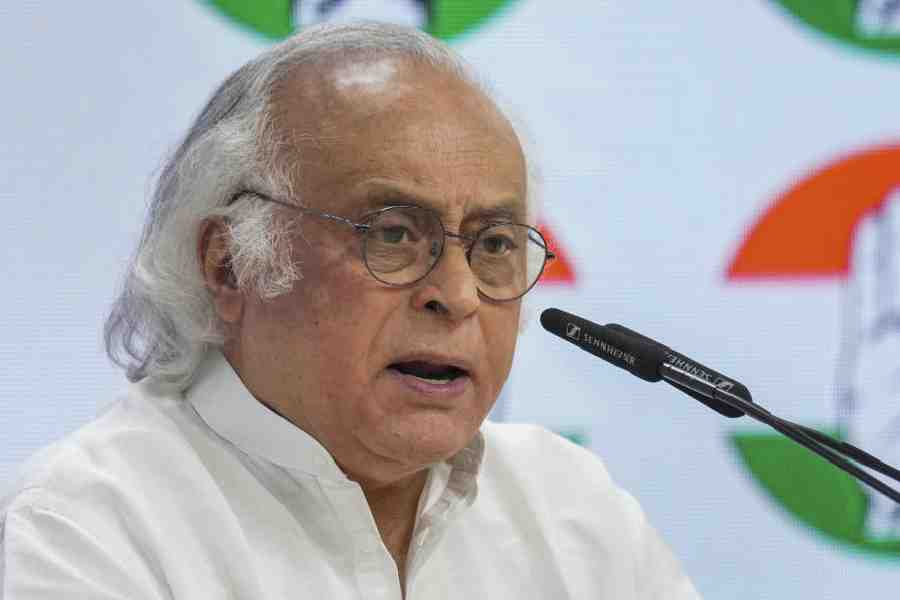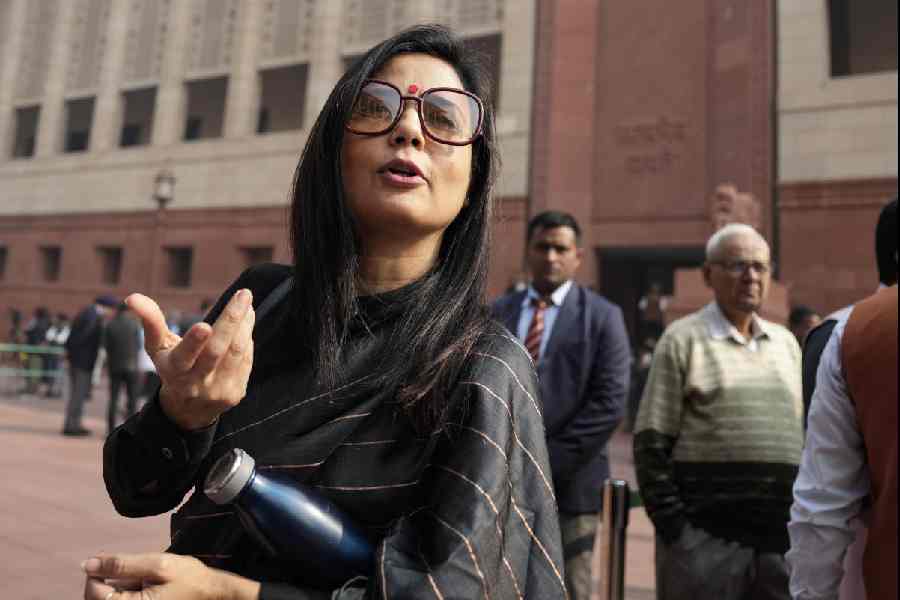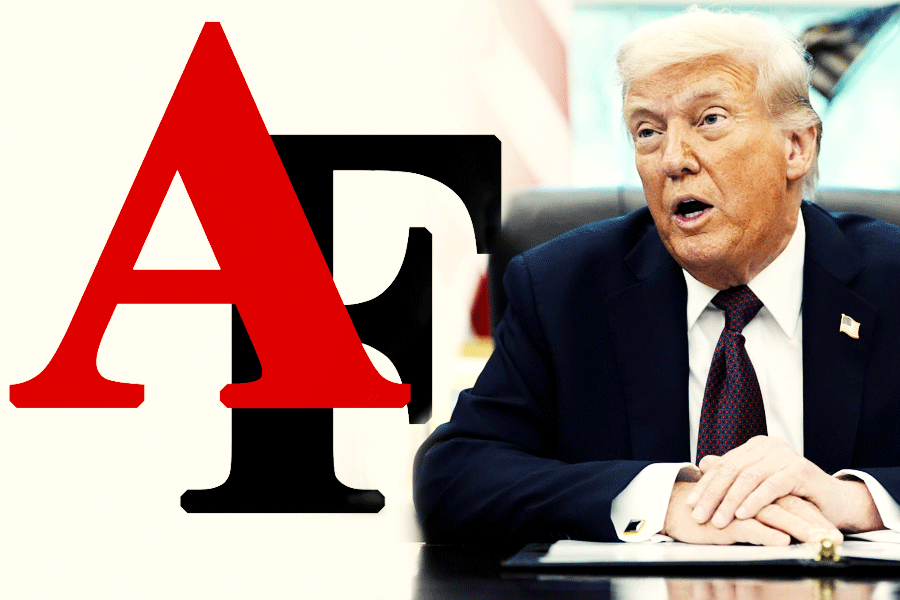 |
| President Pranab Mukherjee and Vietnam counterpart Truong Tan Sang plant a Bodhi sapling at the presidential palace in Hanoi on Monday. Picture credit: Rashtrapati Bhavan |
Hanoi, Sept. 15: India has a new yardstick for measuring its diplomatic successes: the height of Bodhi trees.
When external affairs minister Sushma Swaraj was in Myanmar last month, South Korea’s foreign minister Yun Byung-se walked up to her and announced that his country's relations with India had grown by 400 per cent since March this year.
As her aides listened in puzzlement, Swaraj assumed that Yun was paying a compliment to the new BJP-led government, which has been in power for the better part of this short period.
But the top diplomat from Seoul explained: India had gifted a sapling of a Bodhi tree from Bodh Gaya six months ago to South Korea, a quarter of whose population is of Buddhist faith. That sapling was only 30cm high when it arrived in Seoul and was temporarily planted at that country's national arboretum with plans of eventually shifting it to a Buddhist temple.
Now it is more than 120cm, an astonishing pace of growth, Yun told Swaraj. And to prove it, he had brought a photograph of the tree at its present height to show his Indian counterpart. “His idea was that there is a spurt in growth of our relationship as is symbolised by this Bodhi tree sapling which has grown more than 400 per cent” in a short period, ministry of external affairs spokesperson Syed Akbaruddin quoted Yun as saying.
In Hanoi this afternoon, President Pranab Mukherjee attempted to repeat with the Vietnamese what India tried to do with the South Koreans in March and with the Thais last year. Along with Truong Tan Sang, his Vietnamese counterpart, Mukherjee planted a Bodhi sapling at the presidential palace here, a symbolic highlight of his three-day state visit.
In doing so, Mukherjee was actually picking up the threads of a soft power offensive which India launched 55 years ago, but it had failed to pick up then. In 1959, then President Rajendra Prasad had gifted a similar Bodhi sapling to the legendary leader of the Vietnamese national liberation movement, Ho Chi Minh. That tree is now a visibly huge landmark at the Tran Quoc Pagoda, the foremost symbol of a Buddhist revival in this fast reforming communist country.
Tomorrow morning, before leaving Hanoi for Ho Chi Minh City, Mukherjee will visit this 1,500 year-old pagoda and circumambulate that landmark from India. Hanoi has one more Bodhi tree which is a similar landmark. At the One Pillar Pagoda here which dates back a full millennium is another Bodhi tree which Ho Chi Minh brought back from a visit to India in 1958. The sapling was then given to Ho as a gift by Jawaharlal Nehru.
Mukherjee could not visit the One Pillar Pagoda because its surroundings are in the throes of construction work as part of renovating the temple and it was considered a security risk for the visiting President. But the media accompanying him and some Rashtrapati Bhavan aides did not want to miss one of India’s earliest efforts at spreading soft power.
In 1954, French colonial troops defaced the One Pillar Pagoda. There were other attempts too to damage the shrine, but the Vietnamese preserved what was left of it each time and restored its glory several times. But the Indian gift to the Vietnamese people was never damaged through all these ravages.
The sapling in Thailand was gifted to that country’s king by Manmohan Singh last year when he visited the kingdom as Prime Minister in May. This year on Wisakha Bucha Day which fell on May 13, that sapling was ceremonially planted at the temple of Marble Pali Canon in Thailand.
What is known in Thailand as Wisakha, which commemorates the three signal events in the life of Lord Buddha, namely birth, enlightenment and passing away, is better known in India as Buddha Purnima.
All the three Bodhi saplings gifted abroad by India recently as part of an innovative diplomatic drive are from Bodh Gaya. It is the seat of the Maha Bodhi temple, the exact location where prince Siddhartha of Kapilavastu attained enlightenment 2,600 years ago and became the Lord Buddha.





